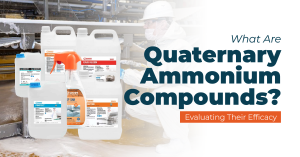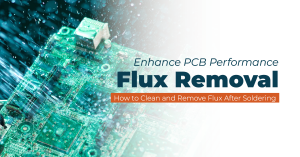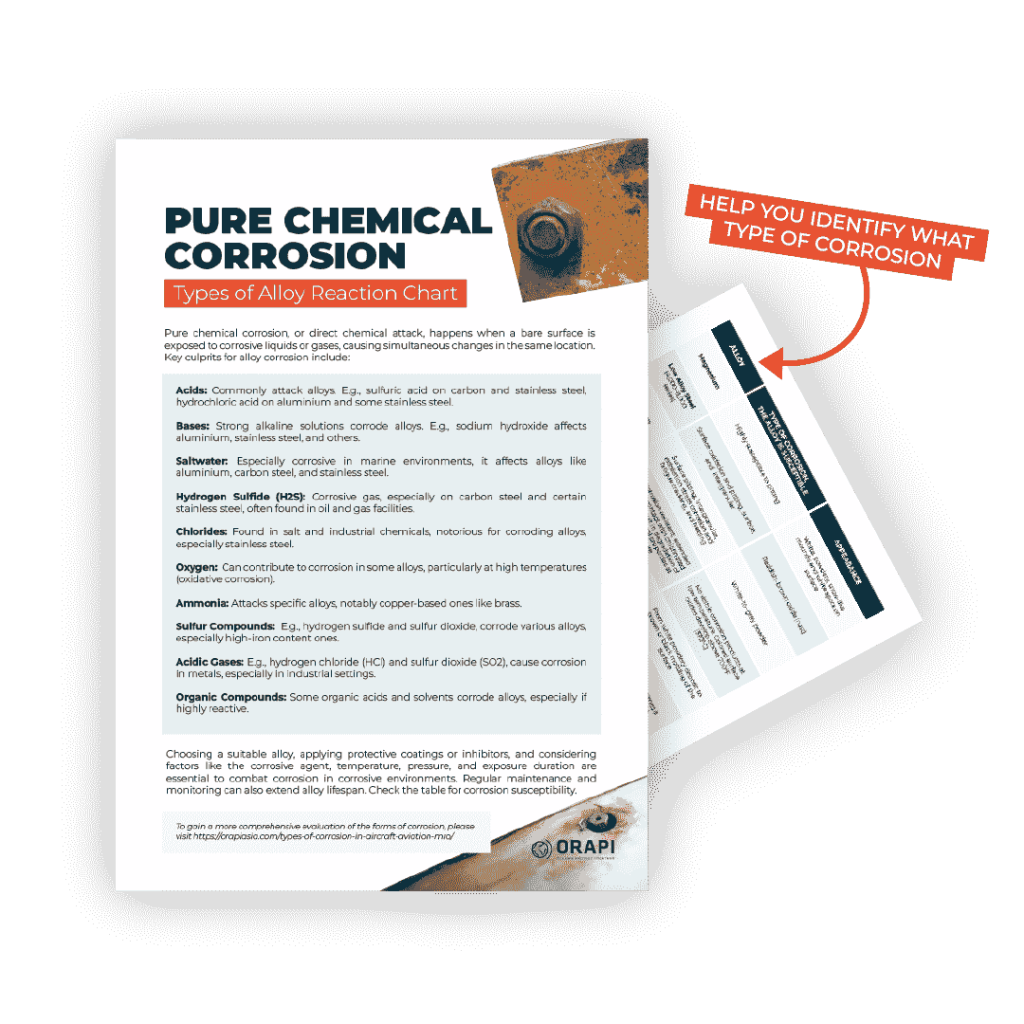
What is Pitting Corrosion?
Pitting corrosion is a specific type of corrosion that creates cavities or “holes” within a material. It is more perilous than uniform corrosion because it’s challenging to detect, predict, and safeguard against. Corrosion products frequently conceal these pits, and even a small, narrow pit with minimal metal loss can trigger failure in an entire engineering system. Pitting corrosion, a common factor in various localised corrosion attacks, can manifest in diverse shapes. These pits may appear open or covered with a semi-permeable membrane of corrosion products, assuming hemispherical or cup-shaped forms.
Pitting Factor
This factor is a measure used to quantify the severity of pitting corrosion. It’s calculated by comparing the depth of the deepest pit caused by corrosion to the average penetration of the metal surface, which is determined by measuring the weight loss of the metal due to corrosion.
Pitting Resistance Equivalent Number (PREN)
PREN is an empirical formula used to predict the resistance of specific types of stainless steels—namely austenitic and duplex stainless steels—against pitting corrosion. The formula, expressed as PREN = Cr + 3.3(Mo + 0.5W) + 16N, combines the concentrations of various elements in the steel (chromium, molybdenum, tungsten, and nitrogen). The result of this formula provides an estimate of the steel’s ability to resist pitting corrosion. Higher PREN values generally indicate better resistance to pitting.
Types of Pitting Corrosion
Trough Pitting Corrosion

Trough pitting corrosion manifests in hemispherical, cup-shaped, or irregularly formed pits. It arises when the protective layer, known as the passive film, is compromised, allowing the metal wall to be eroded, resulting in the formation of narrow and deep troughs. The exposed flat walls reveal the crystal structure of the metal. Such corrosion can rapidly penetrate through the material’s thickness, impacting components like roof sheets, trusses, or gutter systems.
Sideway Pitting Corrosion

Sideway pitting corrosion involves the formation of pits covered by a semi-permeable rust layer, characterised by horizontal grain attack, undercutting, and subsurface shapes. These pits can swiftly penetrate the metal, proving challenging to detect as the metal surface seems unaffected and devoid of visible corrosion. Even with only scattered spots of rust, the damage might misleadingly appear minor.
Causes of Pitting Corrosion

Physical Damage
Structural integrity suffers when protective layers are breached, enabling corrosive agents to harm materials. Even minor flaws like cracks, scratches, or chips in coatings can lead to pitting corrosion. This corrosion, initially subtle, gradually expands and weakens the structure. Thus, damage need not be overt to be detrimental.
Irregular Pressure or Variations in Fluid Movement
Impure Materials
Inferior or flawed metals are highly susceptible to pitting corrosion. Using high-quality metals ensures durability against corrosive elements. Rough surfaces from manufacturing or quality issues also promote pitting corrosion, especially in areas where coatings are unevenly applied.
Unequal or Irregular Protective Layer
Unevenly applied protective coatings are more prone to pitting corrosion. Areas with varying thicknesses or transitions in the coating collect fluids, breaking down protective compounds. A consistently thin, even layer generally offers superior protection compared to an uneven coating.
Chemical Exposure
Highly corrosive and ionised chemicals swiftly degrade solid protective coatings. Applying the suitable layer effectively counters anticipated chemical exposure. While unexpected, limiting exposure to corrosive elements prolongs the protective coating’s lifespan.
Other Factors Leading to Pitting Corrosion
- Imperfections in protective coatings, such as cracks.
- Surface damage like scratches, scuffs, and minor chips.
- Uneven stress distribution.
- Flaws in the metal substrate.
- Turbulent fluid flow.
- Irregular application of protective coatings.
- Chemical degradation of protective coatings.
Pitting Corrosion Mechanism

Pit Initiation
Pit Growth
How to Treat Pitting Corrosion

Zinc Phosphate
Zinc phosphate priming is one of the most popular coating methods to protect against pitting corrosion. Specially formulated primers such as zinc phosphate improve corrosion resistance.
Zinc Spray
Zinc spray metallising is a technique that is very effective against corrosion. It has a smooth finish, which is aesthetically appealing and popular. It doesn’t provide the same protection as hot dip galvanising, but because this is a cold process, there is no risk of distorting the metal. Zinc spray metallising is ideal for ornate metal items such as art exhibits, metal railings and fences.
Chemical Coating
Chemical coating uses electrostatic or compressed air to apply a specially formulated powdered material to a steel surface. It is then melted to form a smooth protective film. Steel treated in this way is not only protected against corrosion and UV damage, but it is also highly resistant to peeling, scratching, and cracking.
Hot Dipping
Hot dipping is a galvanisation method of coating that can be used on steel of all shapes and sizes. It involves immersing the steel in a bath of molten zinc at temperatures up to 450°C. Steel galvanised in this way is a particularly popular approach for pipe-related applications because it is highly protected against corrosion as well as extreme weather conditions.
Preventing Protecting Against Pitting Corrosion

Environmental Factors
Minimising the impact of environmental factors known to induce pitting corrosion is crucial. Control and reduction of humidity, temperature, chloride, pH acids, and salt levels should be prioritised whenever feasible.
Cathodic Protection
Implementing cathodic protection involves applying a reactive metal coating to susceptible metal, typically in the form of galvanised zinc or a similar material. This reactive metal serves as the sacrificial anode, corroding in place of the primary metal to prevent pitting in the substrate.
Corrosion-Resistant Metals
For defence against chemical attack, utilising corrosion-resistant metals such as titanium, nitrogen, chromium, and molybdenum-containing alloys is highly effective, especially in environments with elevated chloride ion levels.
Strategies to Control Pitting Corrosion Include
- Application of coatings to shield metal surfaces from pitting
- Utilisation of more corrosion-resistant materials
- Regularly washing away fluids in contact with the material
- Using cathodic protection techniques
- Preventing stagnant zones
- Implementing inhibitor use/fluid chemistry control
- Maintaining the protective film of the material
ORAPI RECOMMENDS:
ORAPI RECOMMENDS:
IMMERKLEEN is a concentrated acidic cleaner designed for the effective removal of rust from iron and steel and conditioning scale for subsequent removal treatment.
Conclusion: Pitting Corrosion
Pitting corrosion, a stealthy yet devastating form of material decay, poses a grave threat due to its hidden nature and profound impact on structural integrity. This type of corrosion, forming discrete holes within materials, presents significant challenges in detection and prevention. The article delves into its complexities, highlighting causes such as protective film breakdown and stress irregularities, and stresses the importance of appropriate coatings, material selection, and proactive maintenance. It underscores the significance of treating affected surfaces and employing preventive strategies like cathodic protection and corrosion-resistant metals. A holistic approach involving material science, maintenance, and timely intervention is crucial to combat this pervasive issue of pitting corrosion.














